Santa Maria School – Padre Moreau Library
Carvalho Terra Arquitetos renovated Padre Moreau Library, focusing on creating a dynamic space for education and interaction, integrating outdoor areas and preserving the building’s original structure and natural lighting.
The building of the Padre Moreau Library housed one of the first spaces intended for education at Santa Maria school, built in the 1950s, the building underwent several modifications and a major renovation in the 1990s so that it could house a library. More than two decades later, the need to renew the space where children and teenagers meet the world of literature and the use of digital media as a research tool for the formation of critical readers has arisen. The project was a finalist in the Panamerican Award at the XXIII edition of the Panamerican Biennial of Architecture of Quito, held in November 2022 in Ecuador.
The library is strategically inserted in the urban layout of the institution, in the axis of the main entrance, among green areas, at the junction of paths and flows between the teaching, administrative, and sports buildings. The building is oriented according to the cardinal points. Its materiality is related to the exposed brick constructions of North American educational institutions, the origin of the sisters who manage the educational institution.
The main strategy was to reposition the library as a meeting place for students and teaching, in order to make it a pole of attraction for debate, research, and the stimulation of fantasy and creativity. To this end, it was proposed to expand the library outside the building with the construction of three squares. The square facing the sunrise was covered and has its access from inside the library. The other two squares, with benches and gardens, enable outdoor reading and research. On the shaded side, the steps function as small amphitheaters.
The preservation of the existing memory and materiality is the basis for the preservation of the shell of the building, enlarging its openings for the best use of natural lighting during the day and the use of cross ventilation as opposed to the use of mechanical forms of air conditioning.
For the internal spatial configuration, the demolition of all the walls was proposed, keeping the external walls. This operation uncovered the wooden structure of the roof and its four concrete supports in the center of the building. The strategy adopted was to build a central element that could organize the space for the children’s and youth collections. For this, walls were proposed that could support the books and set up areas for storytelling, projections, video rooms, and reading areas. These walls of books could be an acoustic barrier for the different uses proposed. In the center of the space and where the ceiling is higher, it was possible to occupy it with a mezzanine for reading near the wooden structure of the roof and take advantage of the existing zenithal lighting. This space was quickly nicknamed tree house by the users. The proposed materiality was a metallic structure with naval plywood coverings. The wet areas, men’s and women’s restrooms, accessible and the staff pantry were concentrated so that the space could allow visual continuity. The use of colors, carpets, rugs, pouffes, tables and chairs of various heights sought to diversify their use and take the students out of the spatial configuration present in the classrooms.
Design: Carvalho Terra Arquitetos
Design Team: Bruno Carvalho, Carina Terra, Eduardo Carvalho, Matheus Santos
Photography: Manuel Sá

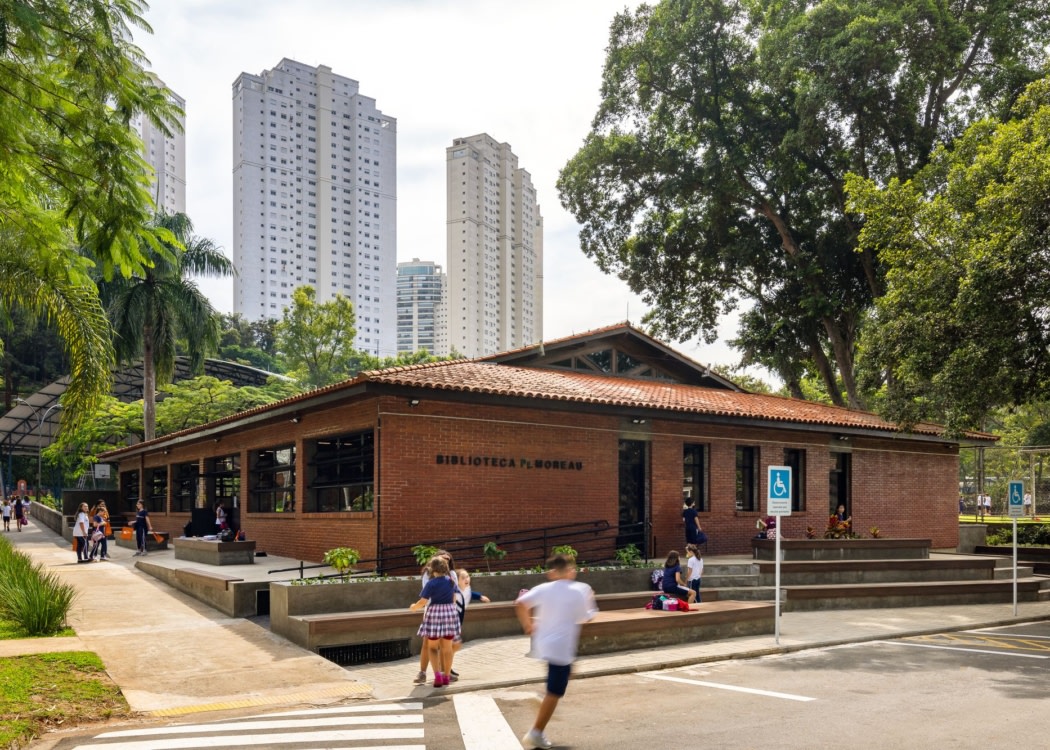
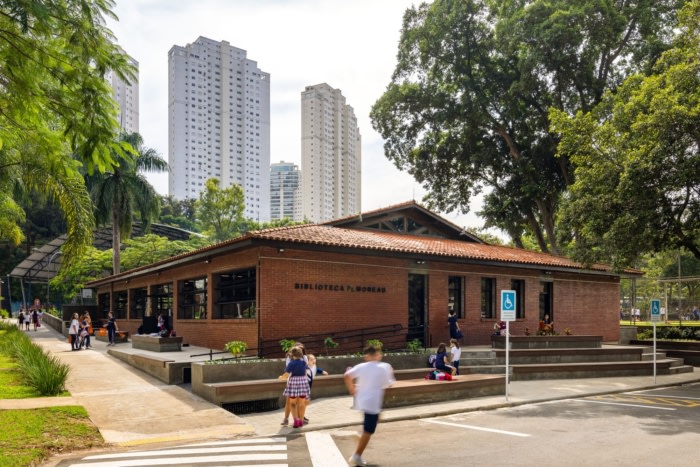
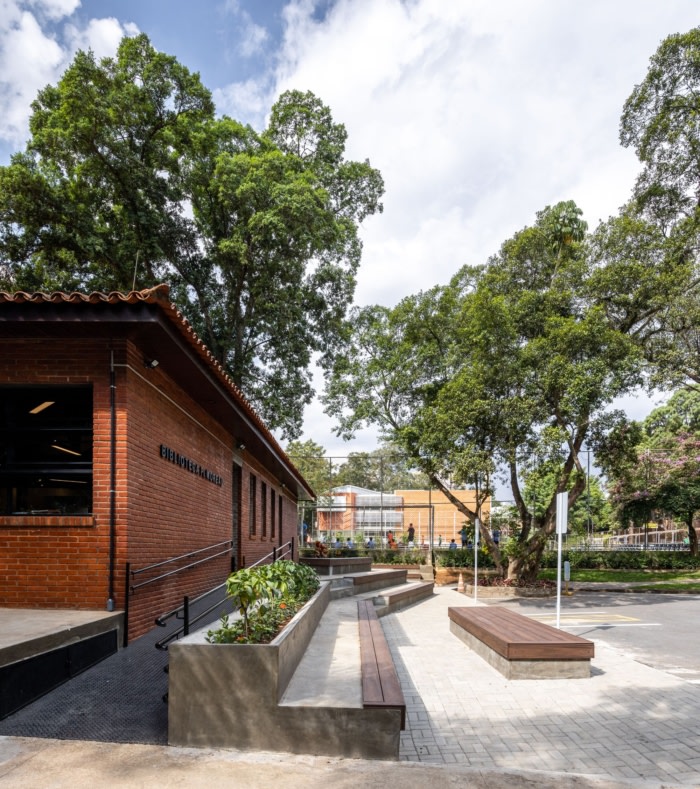
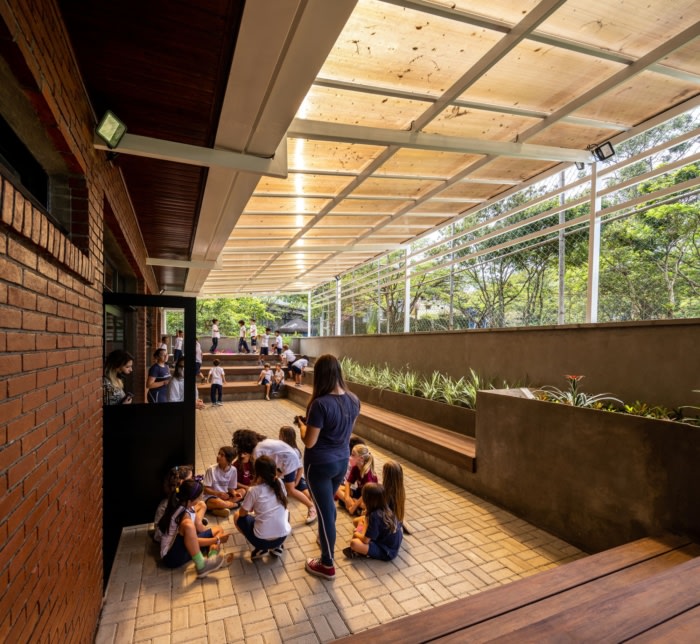
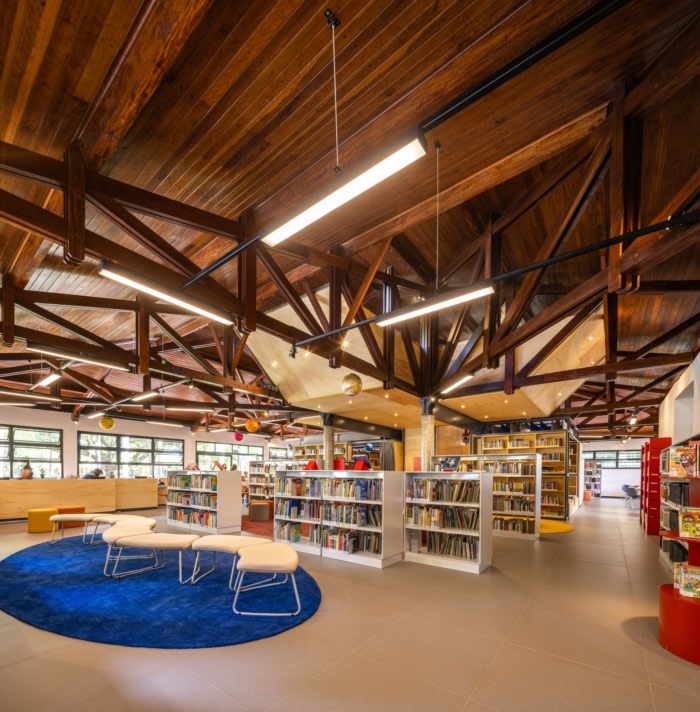

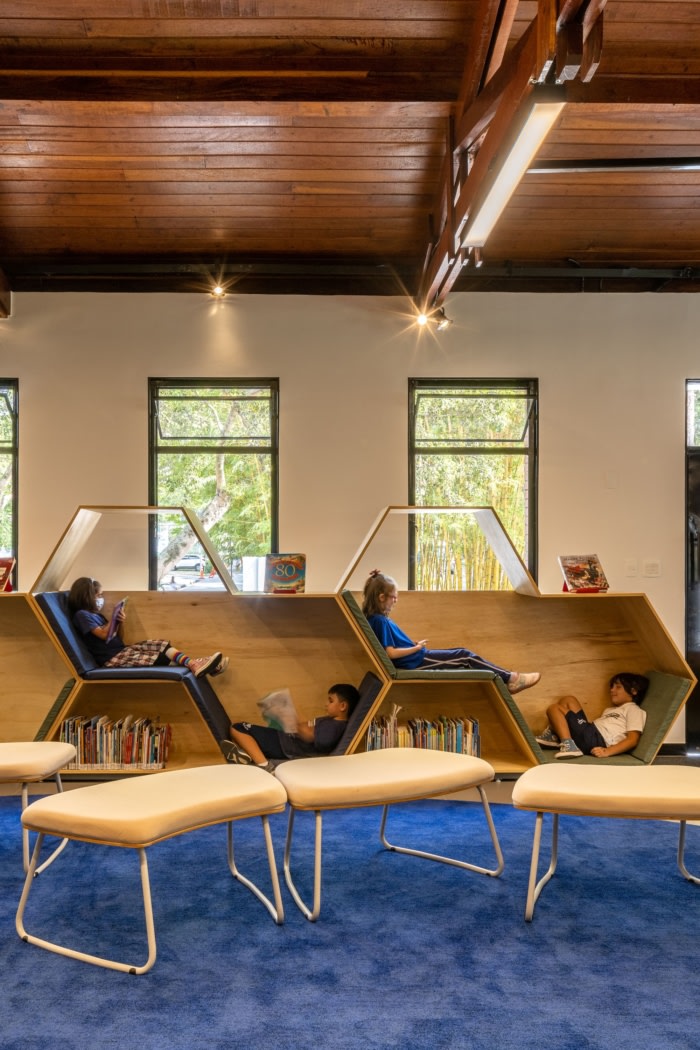

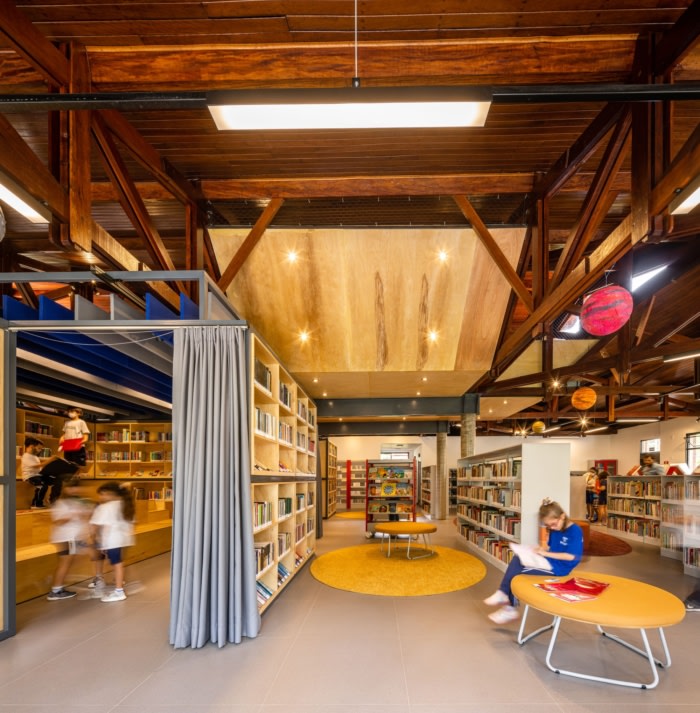
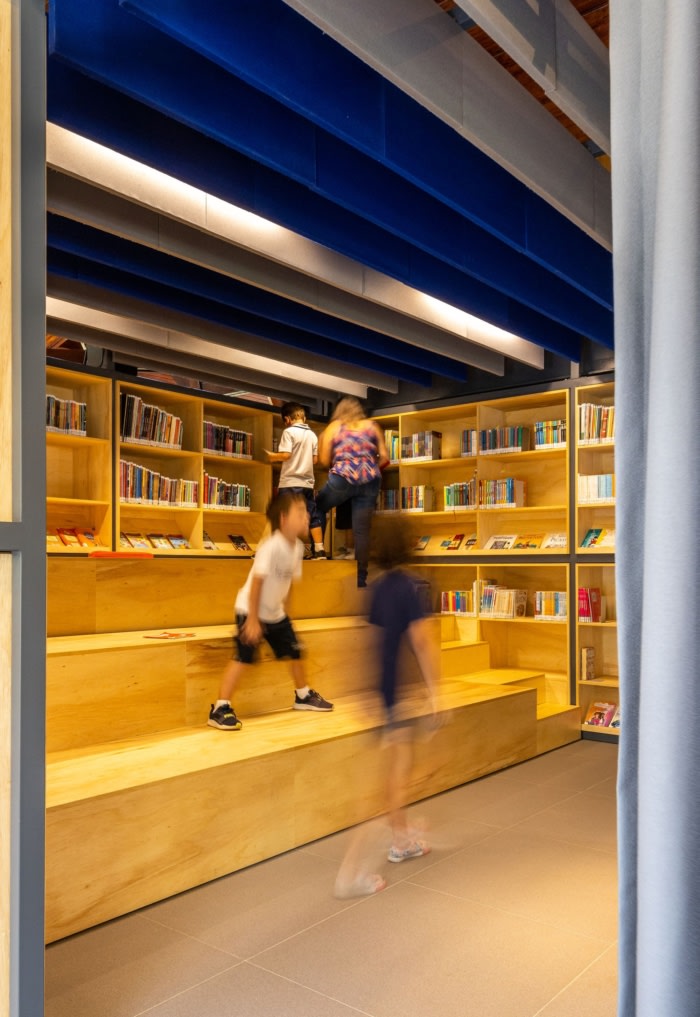
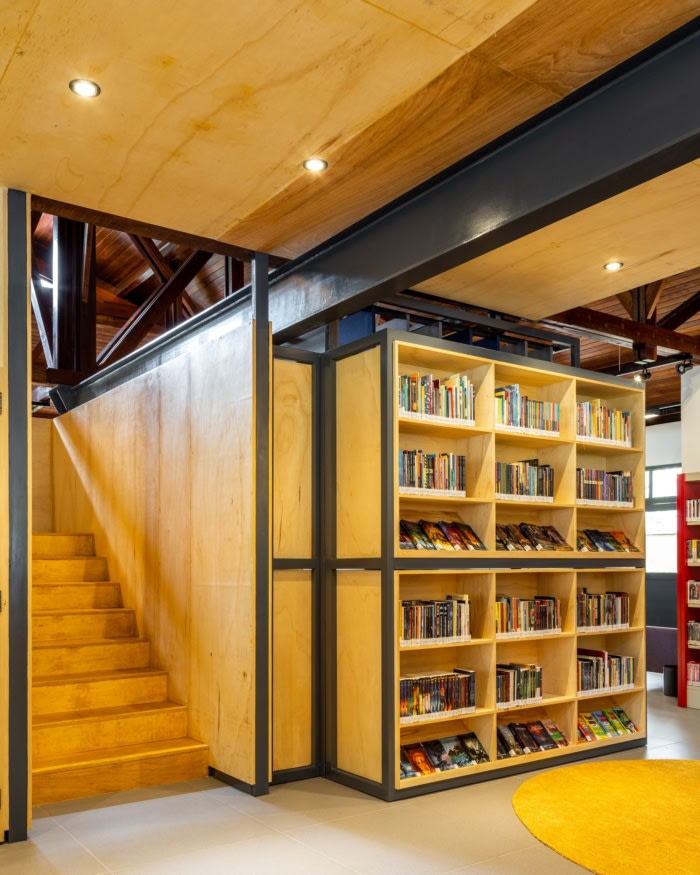
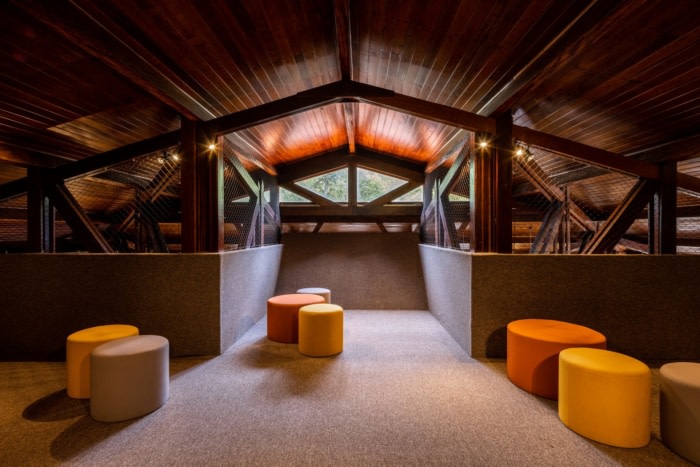
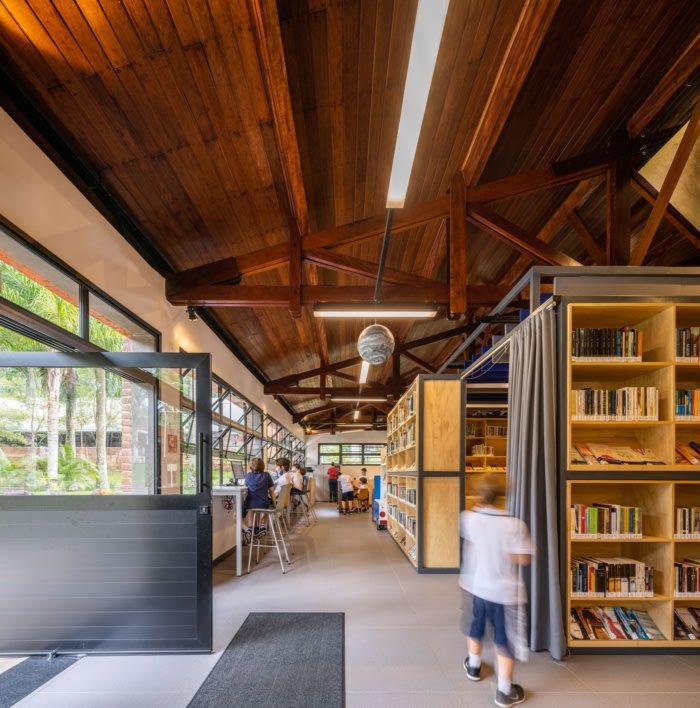
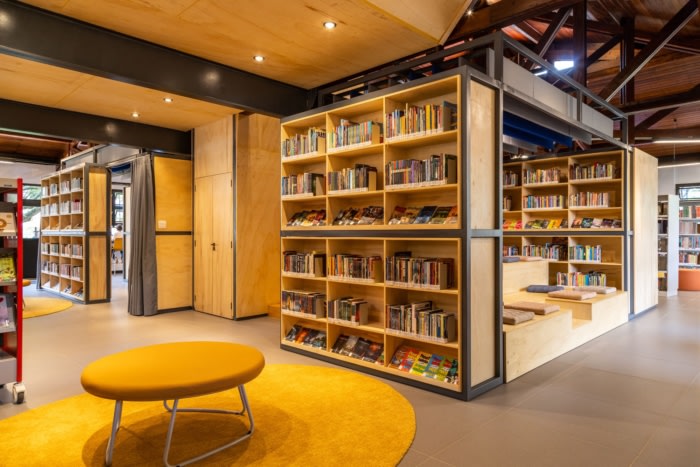
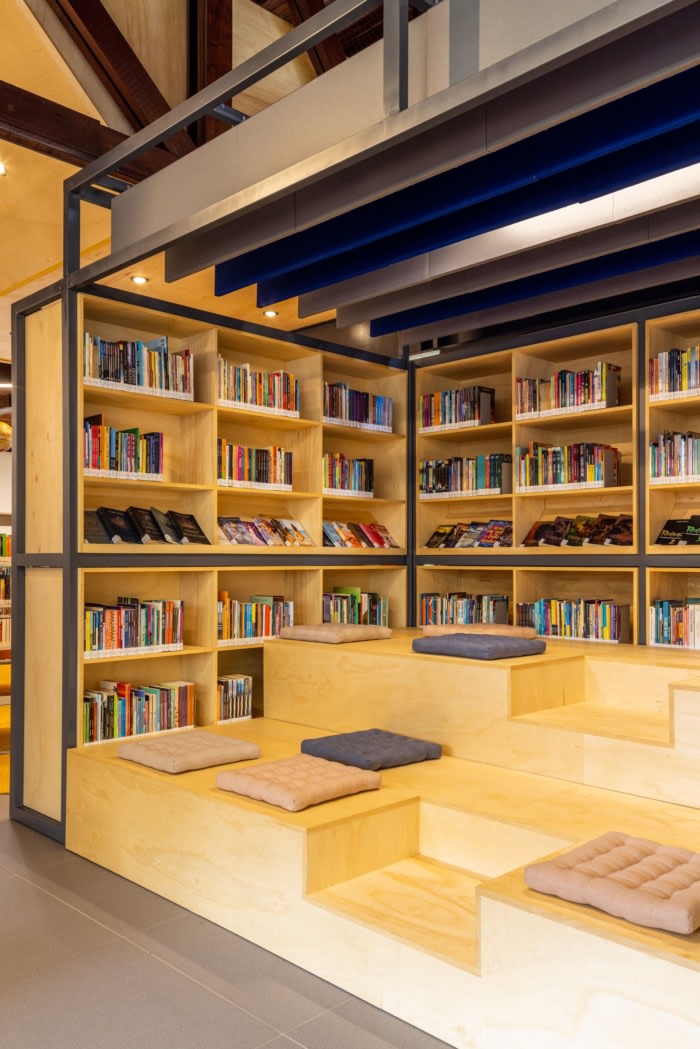
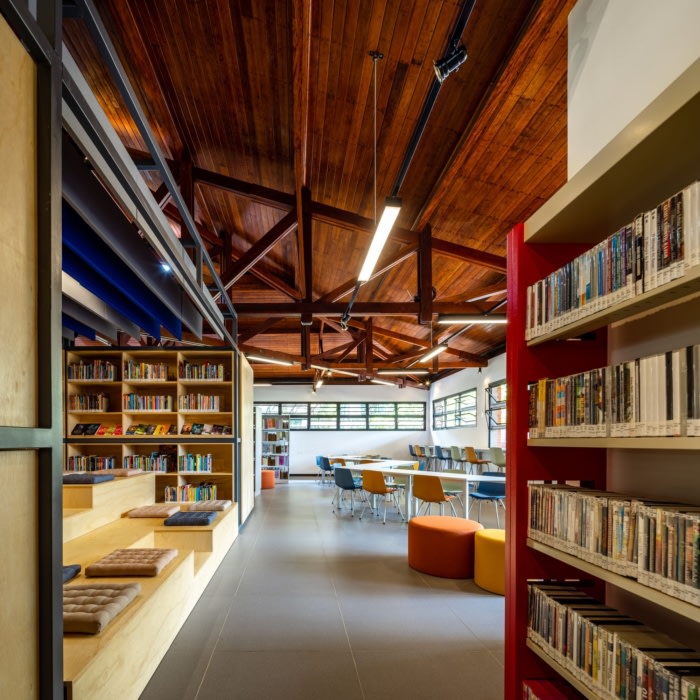
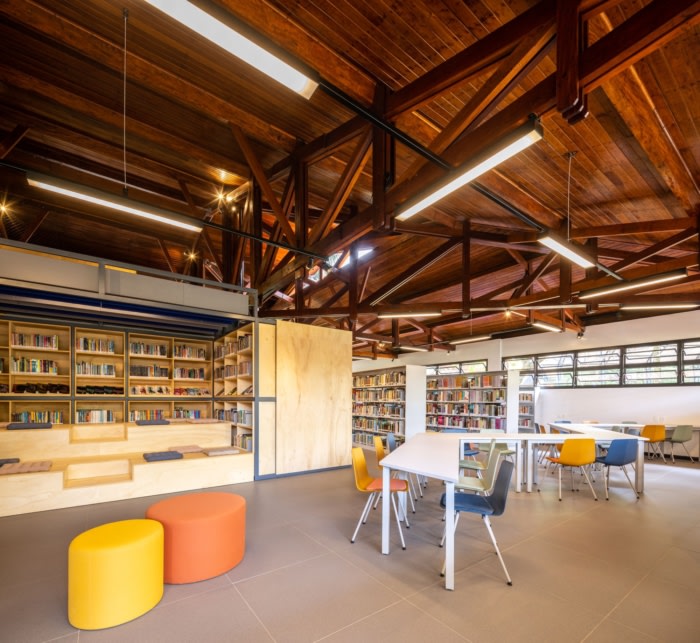
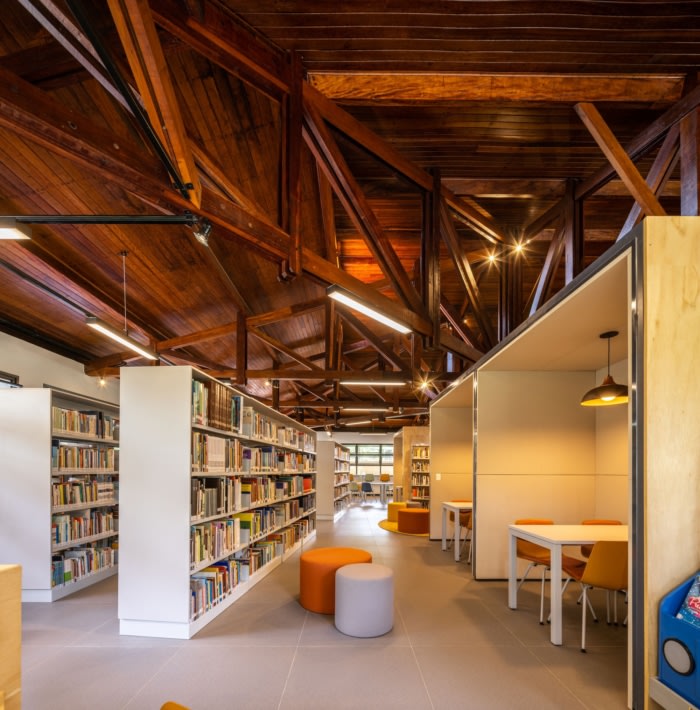
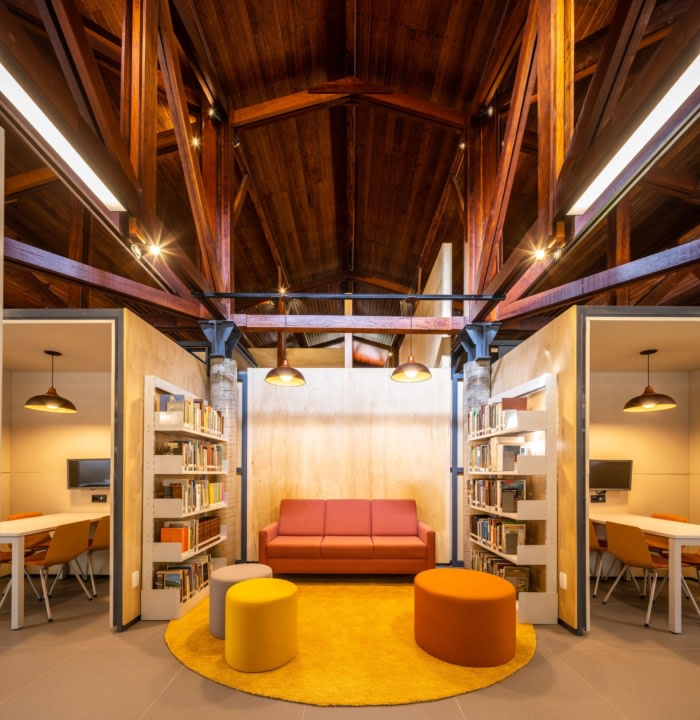
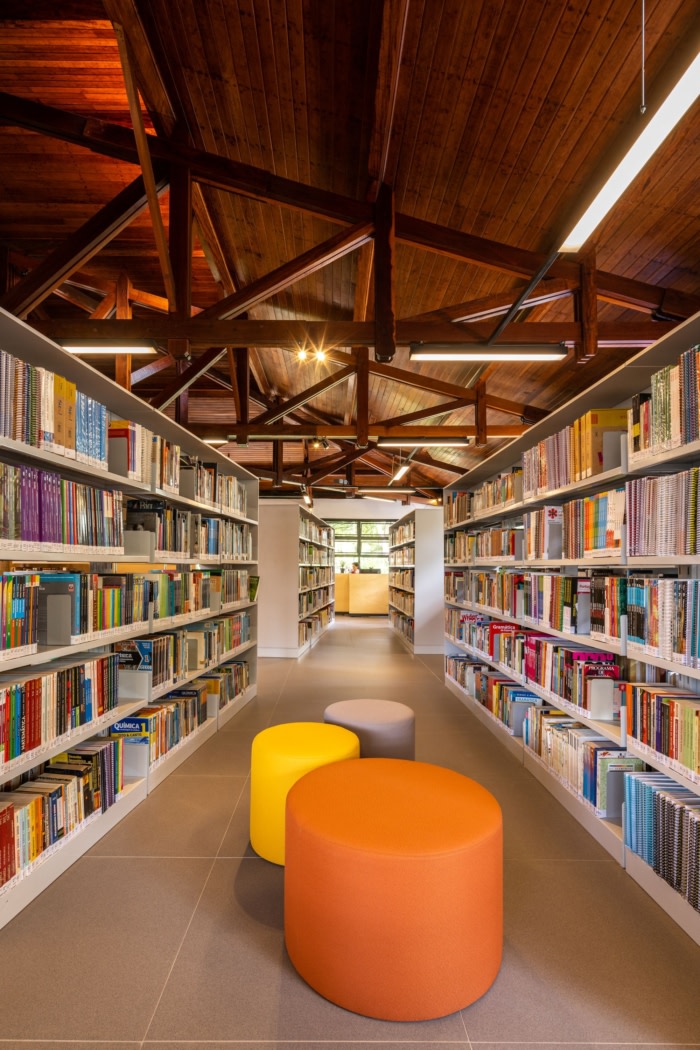
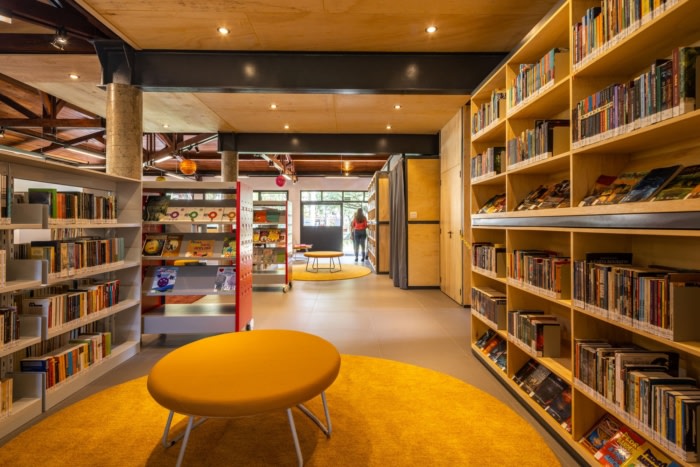



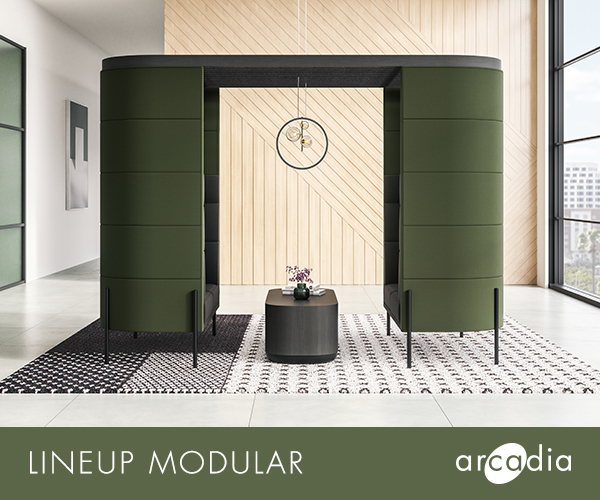
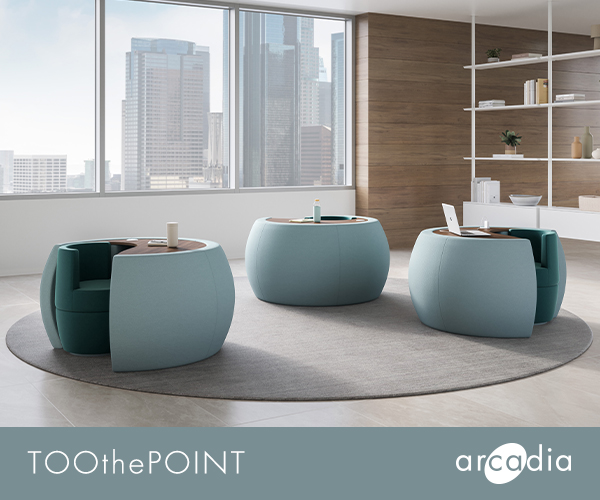




Now editing content for LinkedIn.